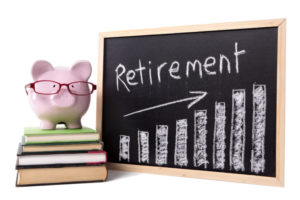 Retirees, or those close to retirement, may have several buckets from which to withdraw income in retirement.
Retirees, or those close to retirement, may have several buckets from which to withdraw income in retirement.
There may be assets in RRSPs, taxable or non-registered investment accounts, TFSAs, and possibly corporate or small business assets. At retirement you need to consider which of these accounts to tap into first.
To further complicate matters you might also have income from a workplace pension, not to mention government benefits such as CPP and OAS (and when to apply for these benefits).
The natural inclination, both from a behavioural and a tax planning perspective, is to put off paying taxes for as long as possible. For Canadians, that means leaving assets inside their RRSP(s) until age 71, converting their RRSP into a RRIF, and beginning RRIF withdrawals in the year they turn 72.
Delaying CPP and OAS
Also worth consideration is the incentive for retirees to delay their application for CPP and OAS until age 70. Do this and your CPP benefits will increase by 42 per cent and OAS benefits will rise by 36 per cent versus taking these entitlements at 65.
Tax-Free Savings Accounts (TFSAs) have been around for less than a decade but already play a critical role in retirement planning. Money saved inside a TFSA grows tax-free and you pay no tax on withdrawals. For retirees, an added benefit of TFSAs is that any money withdrawn does not affect means-tested programs such as OAS and GIS, so there’s no chance that a clawback will be triggered by this income.
You can’t put any more money into an RRSP after age 71 but there are no such limits with a TFSA – you’ll earn new contribution amounts each year until you die. That reason, coupled with the idea of ongoing tax-free growth, entices many seniors to leave their TFSAs intact for as long as possible in retirement.
It’s all well-and-good to suggest holding off on RRSP withdrawals until age 72, and to delay your CPP and OAS application until age 70, and to continue funding your TFSA every year while avoiding the temptation to raid it for as long as possible. But if you’ve retired well before the age of 70 then you’ll need to derive an income from somewhere – especially for those who don’t have a workplace pension.
But what if you need the income NOW?
Which accounts do you tap first in retirement and what’s the best practice for those who may not have the luxury of waiting until age 70-72 to collect their retirement income because, well, they’re retired and need the income?

Jason Heath is one of Canada’s best known fee-only financial planners, writing columns for MoneySense and the Financial Post. He says many retirees intend to defer their RRSP withdrawals until age 72, but he finds that in a lot of cases they are actually better off drawing from their RRSPs earlier and deferring their CPP and OAS until later – “the exact opposite of what they tend to do!”
According to Heath, if someone can draw down on their RRSPs during their 60s and defer their CPP and OAS to age 70, they can also decrease their reliance on risky assets (investments) in their 70s and 80s, while instead increasing their iron-clad, government-guaranteed, inflation-protected pension income.
The case for drawing down on RRSPs in your 60s
But when it comes to CPP and OAS, Heath finds most people tend to apply as early as possible.
“Sometimes that’s because they feel ‘they’ve earned it’ and other times it’s simply because they got an application in the mail from Service Canada.”
Heath uses retirement modelling software in his practice to help determine the ideal drawdown for his clients:
“I like to have someone with a fairly smooth income over retirement, as opposed to a very low income and tax bracket in the early years in exchange for a very high income and high tax bracket if they defer their RRSPs.”
He says it’s also worth considering the net value of one’s estate. For example, your net worth may appear higher if you defer your RRSP to 72 – if you ignore the deferred tax on the RRSP. You also have to take larger withdrawals from an RRSP versus a non-registered account to end up with the same after-tax cash flow. And on your death, half your RRSP or more may disappear to tax.
“So I think there is something to be said about considering how much of a client or couple’s money will end up in their kids’ hands as well as their own hands during their lives,” said Heath.
Modest RRSP withdrawals can be advantageous for those who retire in their 50s or 60s. By converting some or all of your RRSP to a RRIF it ensures you qualify for the pension income amount after age 65, a tax credit that gives you $2,000 of withdrawals tax-free.
Heath’s ideal drawdown strategy:
“I’d always max out a TFSA account as long as someone had non-registered funds to do so. I think the ideal drawdown strategy may be a bit of RRSP/RRIF income, supplemented with non-registered funds, while maxing out your TFSA as long as possible. CPP and OAS deferral is often beneficial.
If someone has a really high income from pensions, rental real estate, non-registered investments or other sources, deferring your RRSP to 72 may make sense. So, early RRSP withdrawals aren’t for everyone. And if someone has corporate assets, it gets even trickier, but running projections can allow you to try to put together the pieces of the puzzle in the most efficient manner.”
Final thoughts
Even though my own retirement is a few decades away I have given some thought about withdrawal strategies and which accounts I’d tap into first after I retire.
Let’s assume I retire at age 55 and start collecting my workplace pension. I don’t have a non-registered account, so I’d top-up my retirement income by withdrawing $15,000 – $20,000 per year from my RRSP between age 55 and 70. I’d hold off applying for CPP and OAS until age 70, and continue funding our TFSAs every year.
By age 70 most of my RRSP would be depleted; however, that would be replaced by the additional income from CPP and OAS. Our TFSAs become the wildcard – giving us flexibility and freedom to fund our hobbies, travel, and to pay for big ticket items such as a new car, renovation, or gifts to the kids.
 In addition to running the Boomer & Echo website, Robb Engen is a fee-only financial planner. This article originally ran on his site on April 9th and is republished here with his permission.
In addition to running the Boomer & Echo website, Robb Engen is a fee-only financial planner. This article originally ran on his site on April 9th and is republished here with his permission.


Nice article – there are many variables that would affect sequence of an individual’s draw-down decisions and which funds to tap first. Is there an on-line calculator w various inputs that can help with this ?
Good article especially as after the financial industries efforts to drain with fees, it is absolutely critical the retiree have a strategy to maximize what is left